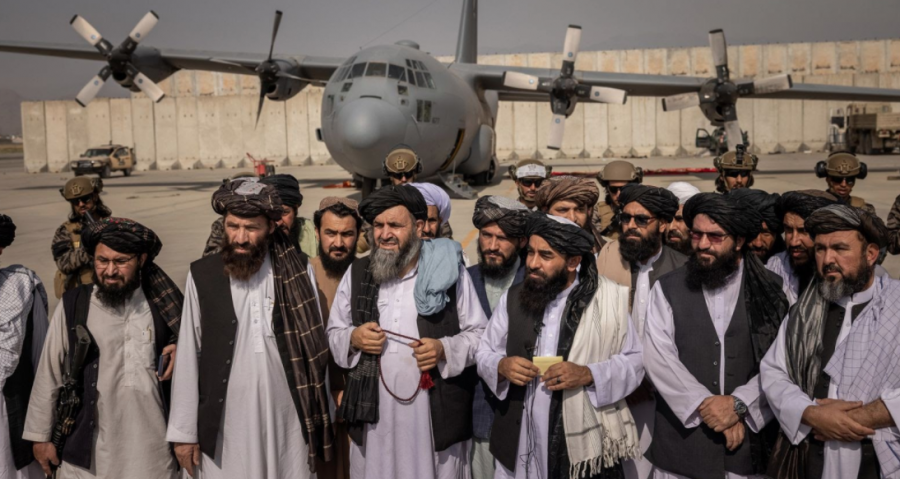Current Events in Afghanistan & How Biden’s Withdrawal Decision is Being Received
Photo Description & Source: Taliban officials declare victory over the United States from the tarmac of Kabul’s international airport on August 31. It was hours after the last American troops left Afghanistan. Jim Huylebroek/The New York Times/Redux
Context
Mid-last month, the Taliban, a militant group that was in charge in Afghanistan in the late 1990s, took power once again. In 2001, an American-led invasion of Afghanistan ousted the Taliban from power but were unable to remove the group completely. The war continued for 20 years until April of this year, when President Biden vowed to finally remove troops from the area by September 11, 2021, the 20-year anniversary of the 9/11 attacks. This removal plan was interrupted, however, by the collapse of the Afghan government on August 15th. As Afghan President Ghani fled the country, the Taliban faced little resistance and were easily able to overrun the capital Kabul. Continuing to defend his choice to withdraw troops, President Biden’s removal plan was completed on August 30th, when the remaining roughly 700 American troops in Afghanistan were withdrawn, marking the end of the 2001-2021 War in Afghanistan.
Why Afghan citizens are fleeing
At the forefront of civilian stories in Afghanistan lies women. As women were banned from public life during Taliban control in the 1990s, the main efforts for the past two decades have been in rebuilding and making new progress. However, with a second Taliban rise to power underway, women’s access to society and education, as well as general security, is at risk. Some Americans, such as Speaker of the House Nancy Pelosi, are calling for the protection of Afghan women and girls. With the removal of American troops came thousands of Afghans fleeing Taliban control. Since the start of the war, Afghans have had to face not just civil conflict, but also chronic poverty, natural disasters, food insecurity, and the ongoing COVID-19 pandemic. Additionally, civilian casualties have been numerous, with the United Nations Assistance Mission to Afghanistan reporting most recently that the Taliban and other anti-government forces, responsible for more than 70% of civilian casualties, have carried out 44 attacks causing more than 1000 civilian deaths and injuries.
Biden’s decision
As a whole, President Biden’s decision to withdraw troops from the area is under heavy scrutiny. The past 20 years have been arduous ones. Following the 9/11 attacks, the main cause for American involvement was based in fear. Many Americans feared a repeated attack from Al-Qaeda, and so deployment of American troops was largely supported. Now in 2021, while Biden’s decision to remove American troops was a breath of fresh air for some, others argue that it came at exactly the wrong moment. In continuing to withdraw troops as scheduled even after the Taliban take over, Biden may have put thousands of Afghan lives at risk. Biden’s withdrawal also caused danger to the 15,000 Americans remaining in Afghanistan and the 7,000 troops sent to rescue them. Ultimately, the question becomes whether Biden’s decision was inevitable and simply happened at the wrong time, or whether removal of American forces altogether will cause more harm than good.
Sources:
https://time.com/6091745/bidens-decision-to-exit-afghanistan/
https://www.hrw.org/news/2015/09/16/dispatches-why-afghans-are-leaving#
https://www.cfr.org/timeline/us-war-afghanistan
https://19thnews.org/2021/08/anger-and-helplessness-as-afghan-women-try-to-escape/

